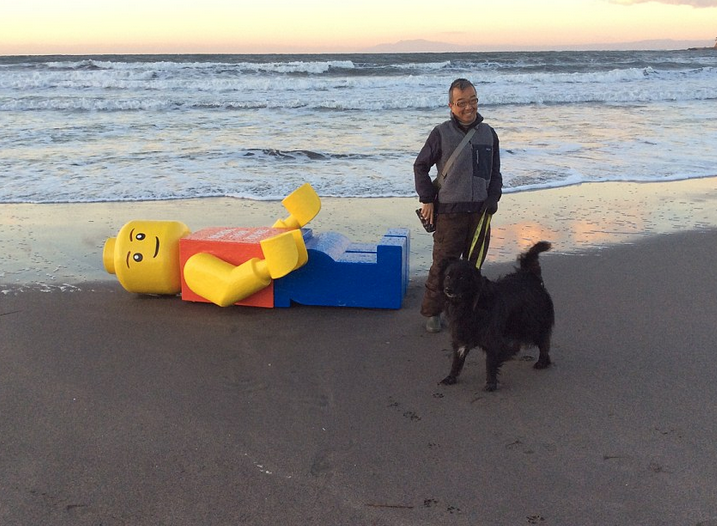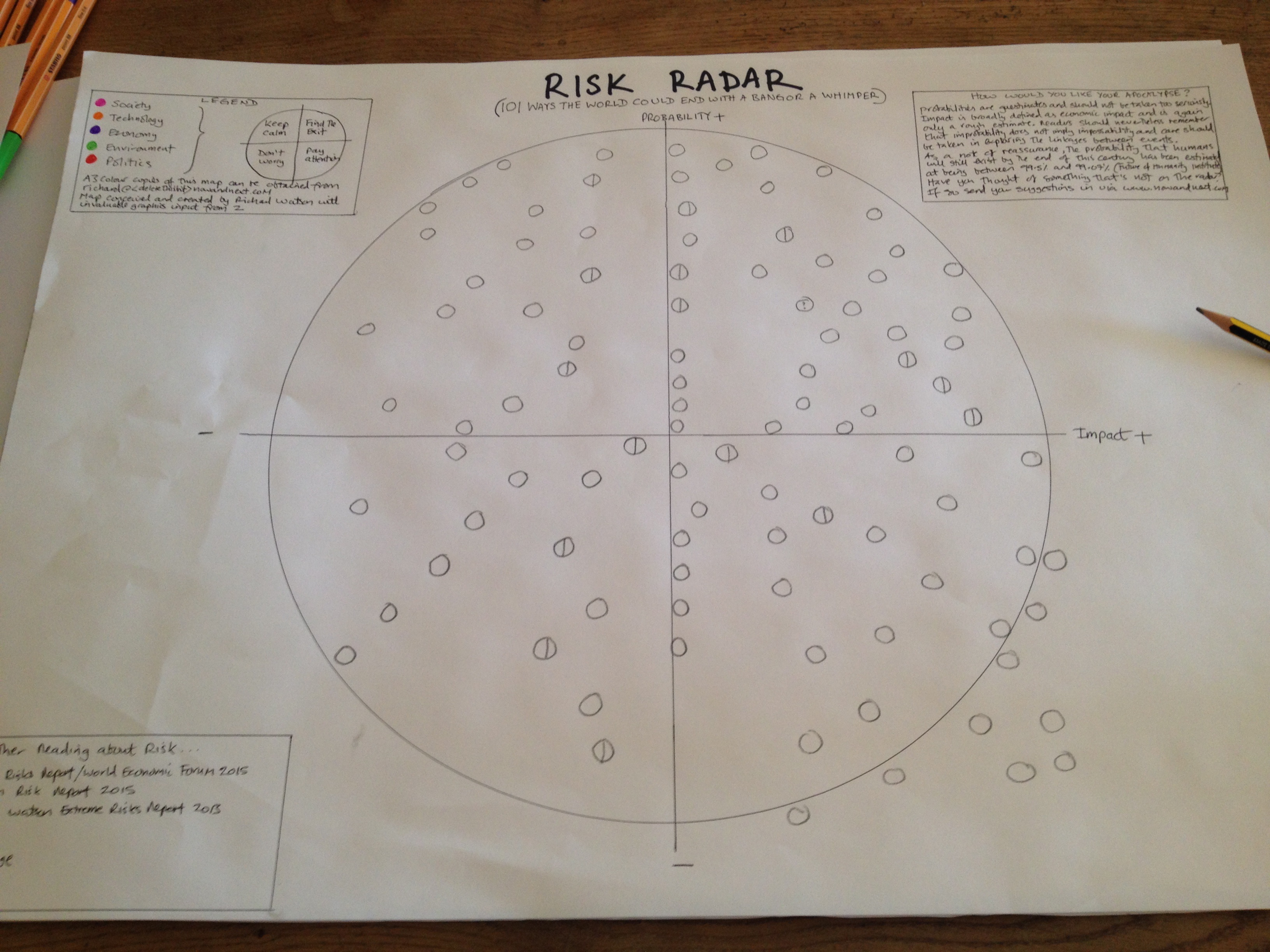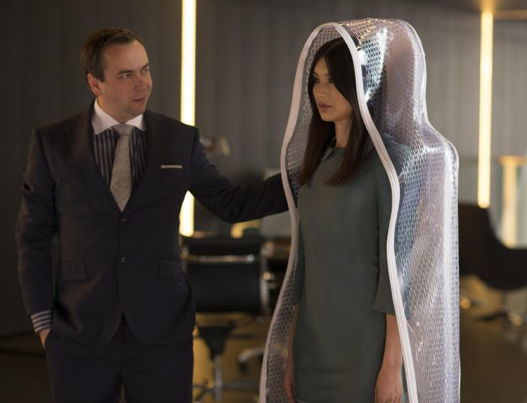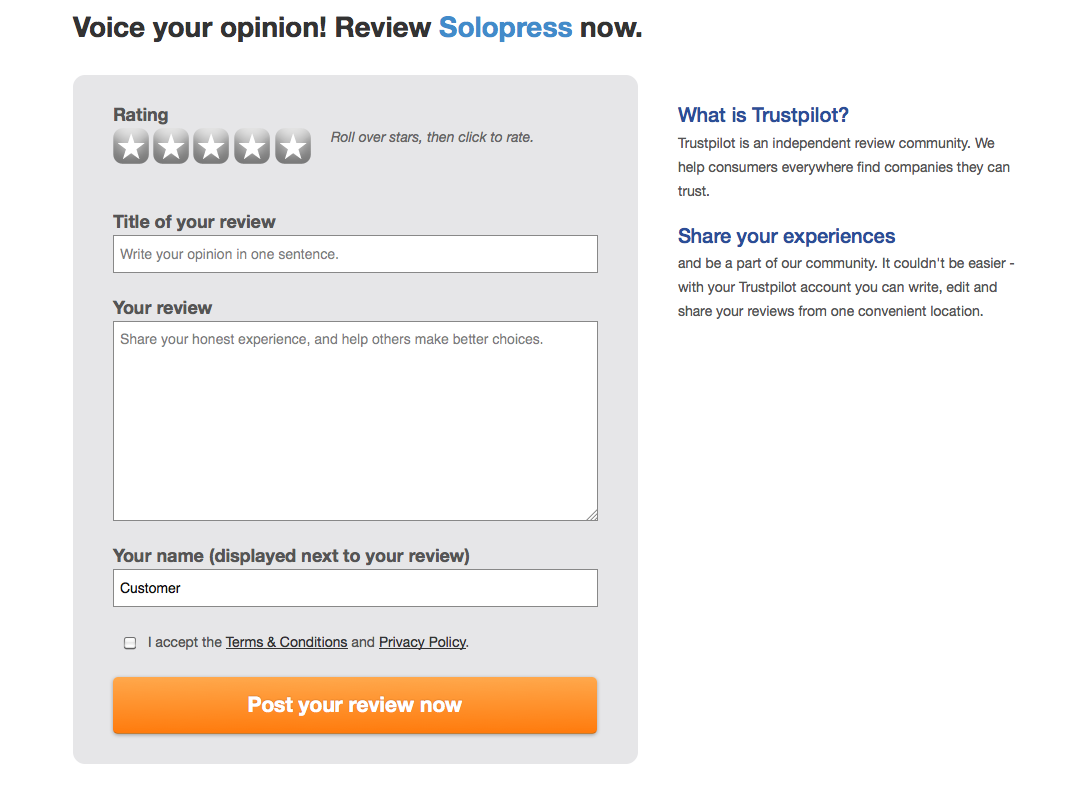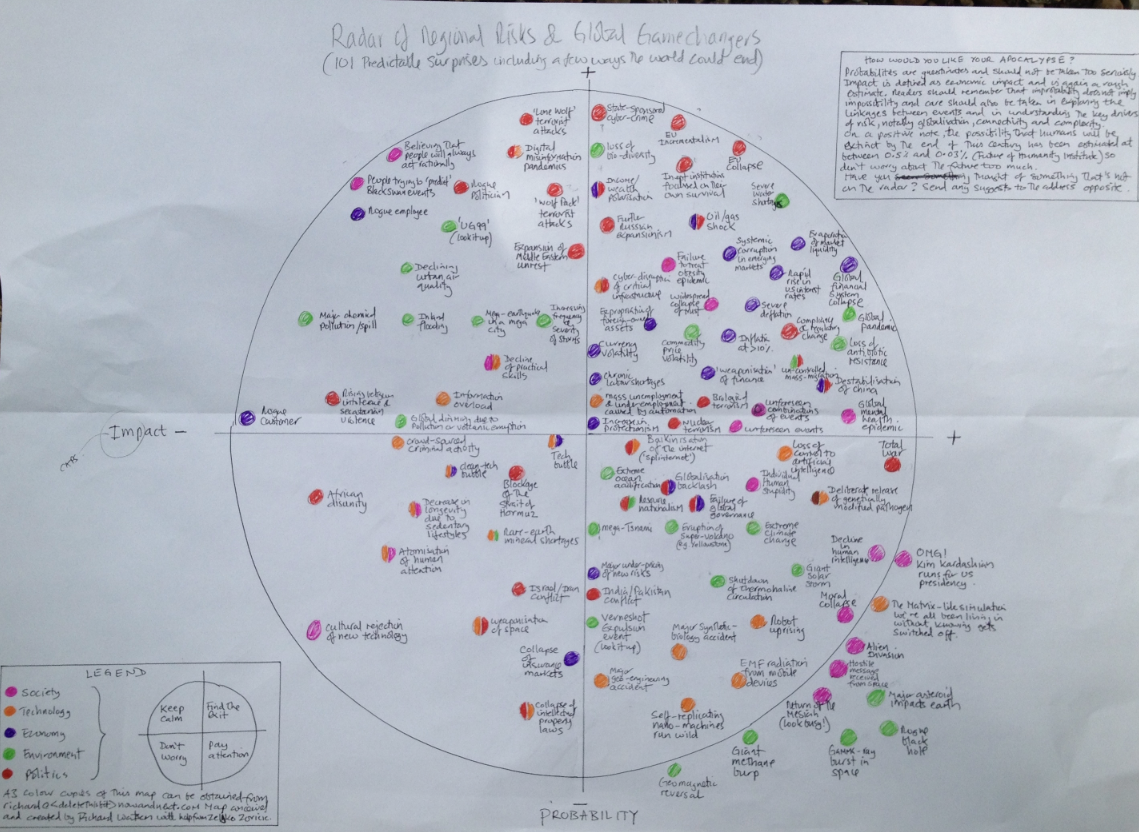Here’s a thought. What odds do you think you might get on there being a military coup in Greece within the next 12-months?
Monthly Archives: June 2015
A writer’s lament
I like this, from a letter by Herman Melville to Julian Hawthorne, as he was hurrying to finish his book, Moby Dick. Rings a little true.
“I am so pulled hither and thither by circumstances. The calm, the coolness, the silent grass-growing mood in which a man ought always to compose, that, I fear, can seldom be mine. Dollars damn me; and the malicious Devil is forever grinning in upon me, holding the door ajar. My dear Sir, a presentiment is on me, I shall at last be worn out and perish, like an old nutmeg-grater, grated to pieces by the constant attrition of the wood, that is, the nutmeg. What I feel most moved to write, that is banned, it will not pay. Yet, altogether, write the other way I cannot. So the product is a final hash, and all my books are botches.
http://www.melville.org/letter3.htm
This means nothing
Risk map
Here’s my initial thinking for my risk map. Probabilities are guestimates and should not be taken too seriously. Impact is generally defined as economic impact and is again only an estimate.
Anyone like to suggest anything else?
Major Risks 2015+
State sponsored cyber-crime
Loss of bio-diversity
Income-wealth polarisation
Further Russian expansion
Cyber-disruption of critical infrastructure
Exchange rate volatility
Chronic labour shortages
Mass unemployment caused by automation
Increase in economic protectionism
EU incrementalism
EU collapse
Inept institutions focussed on their own survival
Oil/Gas price shock
Severe water shortages
Commodity price volatility
Evaporation of liquidity
Global financial system collapse
Rapid rise in US interest rates
Severe deflation
Inflation at >10%
Global pandemic
Regulatory change
‘Weaponization’ of finance
Biological terrorism
Nuclear terrorism
Loss of antibiotic resistance
Destabilisation of China
Un-controlled mass-migration
Deliberate release of a genetically modified pathogen
Unforeseen events
Unforeseen combinations of events
Widespread collapse of trust
Balkanisation of the internet (‘Splinternet’)
Geo-engineering accident
Loss of control to artificial intelligence systems
Total war
Ocean acidification
Globalisation backlash
Mental health epidemic
Decline in human intelligence
Mega-tsunami
Resource nationalism
Failure of global governance
Hostile message received from space
Eruption of super-volcano (e.g. Yellowstone)
Moral collapse
Robot uprising
Major synthetic biology accident
EMF radiation from mobile devices
Self-replicating Nano-machines running wild
Verneshot expulsion (look it up)
India/Pakistan war
Major under-pricing of new risks
Geomagnetic reversal
Giant methane burp
Gamma ray burst in space
Rogue black hole
Major asteroid impact on earth
Alien invasion
Tech-bubble
Clean-tech bubble
Crowd-sourced criminal activity
African disunity
Cultural rejection of new technology
Collapse of copyright laws
Israel/Iran war
Weaponization of near-space
Collapse of insurance markets
Rare-earth mineral shortages
Atomisation of human attention
Decrease in longevity due to sedentary lifestyles
Blockage of the Strait of Hormuz
Rogue customer
Rising religious violence
Global dimming due to pollution or super-eruption
Information overload
Decline of practical skills
Mega-earthquake in a major city
Increasing frequency & severity of storms
Major inland-flooding
Major pollution/chemical spill
Declining air quality
Cyber-disruption to logistics networks
Expansion of Middle Eastern unrest
UG99 (Google it)
Rogue employee
Rogue politician
People trying to predict Black Swan events
Believing that people will always act rationally
Digital misinformation pandemics
Lone-wolf terror attacks
Wolf-pack terror attacks
To be continued…
Humans
The zeitgeist seems to be moving from zombies to another form of the undead – robots. Don’t know if you’ve seen the TV series Humans, but it touches on the key theme of what’s real (human) and what isn’t wonderfully. Reminds me of something I wrote for Future 50 a while back. Oh the image above? Just an early view of the shape of things to come!
—
‘Uncanny resemblance’ is a term often used to describe something or, more usually, someone, who looks strangely or spookily familiar. In robotics the term ‘Uncanny Valley’ is used to describe how people instinctively reject robots that look too much like human beings, the valley in question being a trough in a graph showing robot rejection and acceptance.
The word ‘robot’ comes from the Czech word, meaning ‘servitude’, although some translations use the terms ‘obligatory work’, ‘forced labour’ or ‘drudgery’. Most popular visions of the future include robots, often with human-like forms, and with other features mimicking human height, eyes, limbs, movement and even human conversation. But this is precisely where the trouble starts. We have become accustomed to the idea of robots making other machines, cars, for example, and we are now getting used to robots in the form of cuddly toys, lawnmowers, vacuum cleaners and bomb-disposal machines. The Japanese are apparently even getting used to R2-D2-like nursery assistants and aged care robots. But what happens when someone builds a humanoid-like bot that looks and acts like, well, one of us? To some extent we already know.
In Japan, for example, Dr Hiroshi Ishiguro has created a robot that looks like … Dr Ishiguro. The resemblance is uncanny, prompting an uncomfortable reaction from observers, especially as ‘he’ is sporting the same glasses and wears the same clothes. From a distance you can hardly tell the difference. Interestingly, the idea of such robots tends to be rejected by adults, but is often accepted by young children. Not all young children, though. Before he made a robotic copy of himself, Dr Ishiguro made a lifelike copy of his four-year-old daughter. She was so upset after seeing it that she refused point blank to enter her father’s laboratory in case she encountered it again. As to what will happen if robots become so life- like in appearance and mannerisms that you really cannot tell the difference, that’s anyone’s guess.
Psychologically speaking, we recognize certain types of robot as lifelike – meaning human lifelike – and then we suddenly notice various non-human features or characteristics, which leads to feelings of unease, alienation and even disgust. Perhaps the same could be said of our reactions to dead bodies. Cartoon characters, cartoon-like avatars and cuddly toys, in contrast, do not present the same level of threat because they are not trying to trick us into believing they’re human. Perhaps this is linked to some kind of ancient species preservation or protection instinct. Or maybe we’ve all just been watching too much tech-noir science fiction? Some people totally reject the whole hypothesis, arguing that it’s ridiculous to reduce human authenticity to a single measurement on a graph, but as robotics, virtual reality, artificial intelligence, computer animation and synthetic biology all converge, this debate will get quite complex. This fact has not escaped the attention of artists, such as Patricia Piccinini, who has created human-hybrid sculptures and other controversial artworks. And if you think Patricia’s work is a little disturbing, have a look at the reborn‘dolls’ created by the photographer Rebecca Martinez for a project called ‘pretenders’ or the ‘lifelike’ artworks of Ron Mueck.
But apart from these controversies, what else can we expect from robots in the near future? At the moment the robotics industry is fragmented, with a plethora of standards and platforms, much like the computer industry was in the 1970s. Currently, most robots are also low-volume niche products, ranging from bomb-disposal and surveillance robots used by the military to domestic robots that cut the lawn or sweep the floor. But this will change due to the convergence of a handful of trends. First, the cost of computing power (processing and storage) is dropping fast. Second, distributed computing, voice and visual recognition technologies and wireless broadband connectivity are similarly dropping in price and increasing in availability.
Personal robots could soon be dispensing medicine, folding laundry, teaching kids and keeping an eye open for intruders. There could also be some less obvious uses for robots, especially in customer service roles. For instance, robots could carry your shopping bags in a supermarket or your suitcases in a hotel. They could replace guide dogs for visually impaired people or take over from care workers in nursing homes. Whether a machine will ever fully replace human or animal contact is a big question and will in large part depend on what these robots look like. However, attitudes may shift, especially if humanoid robots start to display synchronous behaviour (e.g. they mimic human gestures) and can learn to be emotional. As for whether people could form strong relationships with robots, that’s an open question, although our experience with animals might suggest that we will.
There is little evidence of any inner consciousness in domesticated animals, but we often treat them almost like human companions. Perhaps, by 2050, we will regularly have relationships with robots and even end up, in some cases, marrying them
Digital v Human (trust metrics)
Digital risks
I don’t know if you saw an article in the Sunday Times (UK) last weekend about babies being given iPads?
According to Prof Annette Karmiloff-Smith from Birkbeck College: “children who are given the computers will show better signs of development, even if it’s not in a ‘conventional sense.’ This might be true, but suggesting that: “It’s OK to give your baby an iPad from the beginning. They might put a corner in their mouth” seems a little stupid, especially if the device is switched on with its wi-fi enabled. Would you be happy for a baby to chew your iPhone?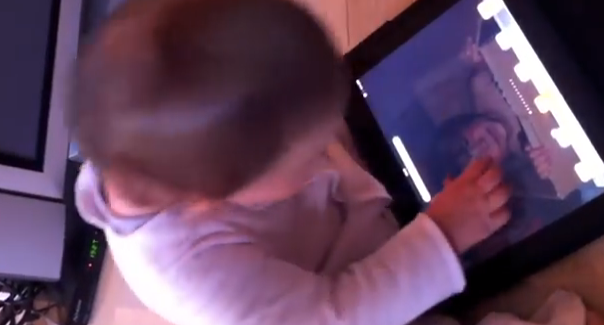
Another academic, Dr Erica Mallery-Blythe, has pointed out that radiation emitted by Wi-Fi, mobiles and other wireless devices (otherwise known as RF and EMF radiation) is increasingly being linked to conditions ranging from headaches, insomnia, fatigue and, most worrying of all, brain tumors. This is a concern with adults, but with babies the skull is very thin and any negative effects could be magnified.
New Risk Map
Aren’t they all?
Not in the book
Nothing directly related to the new book at the moment other than to say that the chapter on money and the economy isn’t working. There is one quote I spotted in The Week, which could have gone in the book, but it’s a bit late now – or at least I’ve included too many already. The quote is from Terry Pratchett: “Real stupidity beats artificial intelligence every time.”
Other news is a new map has suddenly come into view. I was playing around with a cone shape, which was either an ice-cream cone of uncertainty or a watermelon of wildcards depending on how you drew/sliced the visual. What I’ve ended up with instead, which seems to be working better, is a risk radar. This isn’t an original idea, but I think it can be made to work quite originally. The only problem is that I’ve been researching major risks (World Economic Forum, Towers Watson, Centre for the Study of Existential Risk) and they are all, more or less, focused on the same things.
So the question, dear reader, is what are they (we) missing?
Or…what are we seeing, but choosing to ignore?

